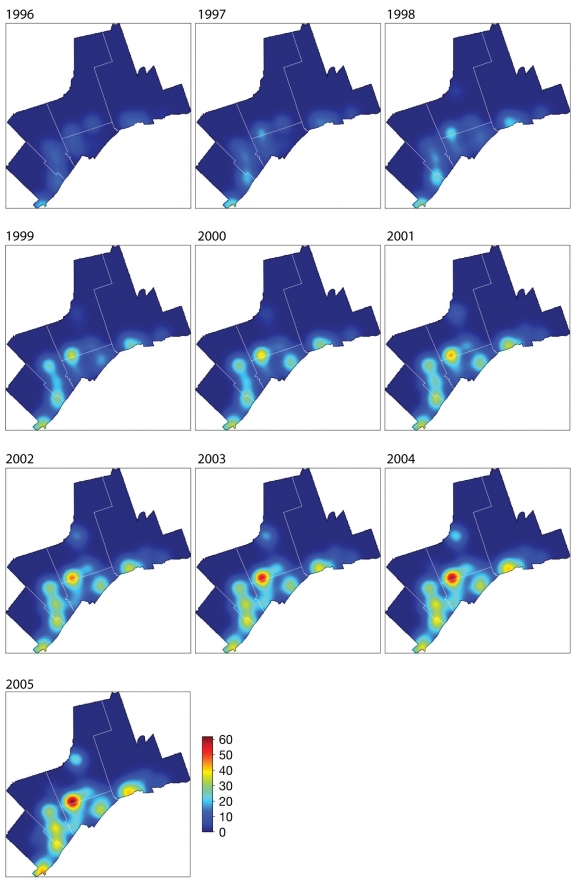The GTA has experienced rapid growth in the number of big-box-format retailers since 1996; by 2005, the number of big-box stores had doubled to more than 1,100, totalling an estimated 42 million sq. ft. of retail space. The development of big boxes has largely been clustered into power centre and power node developments.
Table 3 indicates the widespread development of power centres in the GTA. As Figure 9 shows, this growth in power retail capacity has not occurred evenly over space. Early inner-suburban expansion of capacity in Toronto has yielded to the intensification of power retailing in the suburban GTA, and infill development in the inner urban area. This trend clearly contrasts with the concentration of shopping centre and traditional retailing primarily within the historic urban core and the inner suburbs. The largest concentration of power retailing in the region has been built around the junction at the intersection of Highway 400 and Highway 7, to the north of the City of Toronto. This sort of development indicates the importance of accessibility by automobile associated with "remote" parcels located near infrastructure constructed during Canada's era of highway expansion (1950s and 1960s). Land owners and developers make the most of this accessibility advantage (i.e., the ability to reach markets and attract consumers who drive cars) provided by public infrastructure, drawing consumers from both newly developed suburban and exurban residential areas, and from elsewhere across the region.

